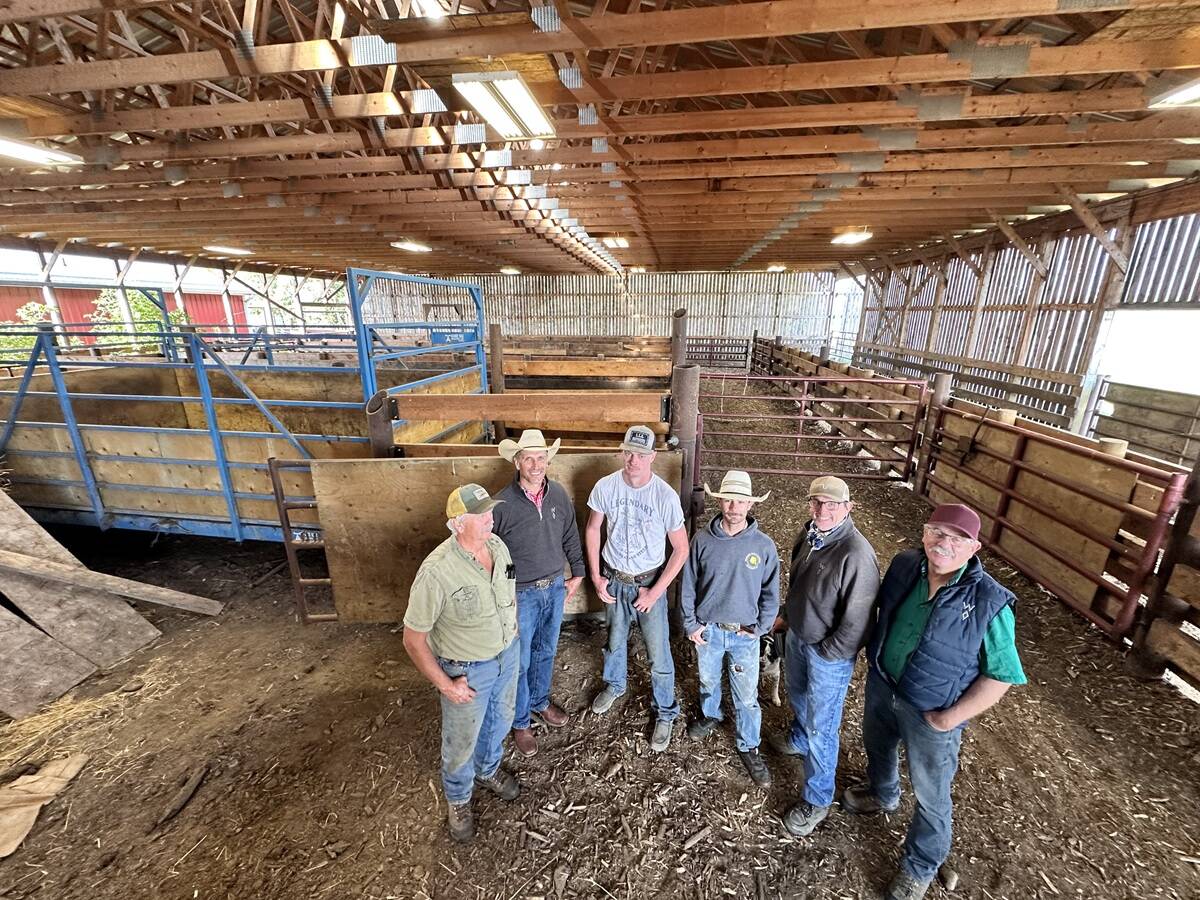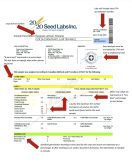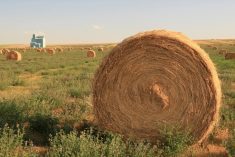Sometimes what’s old is new again. That certainly holds true for sainfoin as forage breeders release new varieties designed for today’s beef and forage operations.
Sainfoin is a non-bloating legume native to Europe and western Asia. Agriculture and Agri-Food Canada (AAFC) released varieties such as Melrose and Nova in the 1970s and ’80s. But these older varieties didn’t stand up to more than one cut. As sainfoin struggled to hold its own in the stand for more than a few years, the pink-flowered forage fell out of fashion.
Read Also

Farm families work together to graze cropland with cattle in the fall
These Alberta farm families have separate operations, but work together to manage their land
Still, sainfoin has its charms, including its condensed tannins. Condensed tannins bind with plant proteins in the cow’s rumen, allowing her to digest them as bypass proteins, which prevents bloat.
By mixing sainfoin with alfalfa, the condensed tannins and non-bloating characteristics associated with sainfoin can reduce bloating incidence, says Dr. Alan Iwaasa, grazing management researcher with Agriculture and Agri-Food Canada (AAFC) in Swift Current. Recent western Canadian studies show that alfalfa pastures with 20 to 25 per cent dry matter sainfoin seeded in alternate rows cuts bloat risk, notes AAFC’s Sainfoin for Western Canada booklet. The condensed tannin levels are highest when sainfoin is at 50 per cent bloom.
Dr. Surya Acharya, an AAFC forage breeder in Lethbridge, set out to design sainfoin varieties suited to the modern beef producer. A few years ago, Acharya’s breeding program released AAC Mountainview. Distributed by Northstar Seed, Mountainview has the regrowth potential to yield similar to alfalfa cultivars in a two- or three-cut system, Iwaasa says, as long as there’s sufficient moisture.
However, Iwaasa says that Mountainview’s regrowth potential might not be realized in drier conditions. For example, in the Swift Current area, producers were lucky to get one hay harvest in 2017 and 2018. In dry, single-cut scenarios, older cultivars such as Nova and Melrose can do quite well, he adds.
AAFC recently launched another sainfoin variety, AAC Glenview, now available through Union Forage.
Although Glenview came through Acharya’s program, the design process was a little different. Unlike Mountainview and older varieties, Glenview was selected under grazing conditions, says Iwaasa. Glenview was developed from high-yielding material that regrows rapidly when grazed, the AAFC’s booklet notes.
“And so its longevity or its ability to stay in the stand may be better — with the Glenview — under a grazing scenario,” Iwaasa says.
AAFC’s sainfoin varieties are most at home in the brown soil zone. Both Glenview and Mountainview were selected at Swift Current and Lethbridge, and so researchers tended to pick plants that lasted under drier conditions. The earlier program that produced Melrose and Nova was also based in the brown soil zone, says Iwaasa. All that makes for drought-tolerant legumes.
However, Surya has expanded the geographical region for selection, and some work is now done in Saskatoon. Iwaasa says the biggest challenge with expanding into wetter areas is likely to be disease resistance. Sainfoin could be vulnerable to disease, but Iwaasa says they need to do more research on this. AAFC’s booklet notes that hardier sainfoin varieties can grow in many of the same areas as alfalfa.
Other benefits to growing sainfoin
It’s not just sainfoin’s condensed tannins that are on point. Animals like to graze the legume, and so sainfoin can be used to create a highly productive pasture, Iwaasa says. Sainfoin also ranks high in nitrogen use efficiency and helps growing animals use crude protein more effectively. That may be an advantage later in the grazing season, as protein content in some other forages declines, Iwaasa says. And new cultivars have good regrowth potential, so they can be grazed again and still cut the bloat risk of regrown alfalfa, he adds.
AAFC’s booklet on sainfoin notes that condensed tannins damage gastrointestinal parasites and appear to reduce shedding of the dangerous E. coli O157:H7 strain. Sainfoin also may reduce atypical pneumonia/emphysema infections in pastured cattle.
Organic growers have been very interested in sainfoin, says Iwaasa. It also provides environmental benefits such as sustaining pollinators. There’s also been some work showing condensed tannins may improve methane emissions.
“In essence you’re improving efficiency of the animal’s performance by not losing some of that energy towards greenhouse gasses such as methane,” says Iwaasa.
Maintaining a sainfoin stand
Keeping those sainfoin populations high for more than five years is a challenge. Researchers have let some plots go to seed, dropping seed between the rows, but the plant’s ability to reseed itself is very limited, says Iwaasa.
“Insect predation reduces the viability of the sainfoin seed and as a result, you don’t really get the seed-to-soil contact by the seed just falling,” he says. AAFC researchers in Swift Current and Lethbridge are examining ways to reseed sainfoin back into existing hay or grass stands.
But for producers who want their sainfoin stands to be more than a passing fad, the best reseeders might be the four-legged variety. Iwaasa says that “animal interaction seems to be very, very beneficial” to sainfoin reseeding.
When cattle graze sainfoin later in the year, they knock seeds from the plants and push the seed into the soil. This improves soil-to-seed contact. That animal interaction benefits all the sainfoin cultivars AAFC has released. Sainfoin starts flowering about two weeks before alfalfa and the seed should easily reach maturity by the end of August, says Iwaasa.
Consumed sainfoin seed that passes through a cow’s system may germinate later as well. Iwaasa says they’re looking at whether there’s a benefit when seed goes through the digestive tract of a ruminant.
Producers can’t realistically defer grazing on their sainfoin pastures every year, especially in dry years.
“However, it should be something you’re always looking at and implementing as part of (your) management practices,” says Iwaasa.
Environmental factors, such as moisture conditions, do play into reseeding success, says Iwaasa. For that reason, producers shouldn’t wait until sainfoin populations have already declined five or six years after the initial seeding. Instead, defer grazing earlier in the cycle, in year three, for example, Iwaasa suggests. That way seeds constantly have a chance to germinate.
Perhaps the combination of informed grazing management, new cultivars and more research will transform sainfoin into a timeless classic on western Canadian ranches.
The recently updated Sainfoin for Western Canada booklet covers available cultivars, nutritional qualities, stand establishment, production economics and grazing management. Producers can download the booklet from the AAFC website or get hard copies from Dr. Alan Iwaasa or AAFC extension specialists in Alberta and Saskatchewan.
















